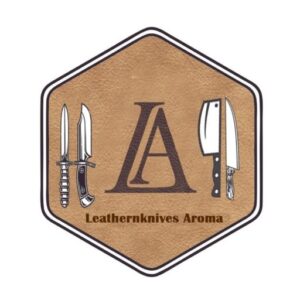Creating the perfect handmade Damascus steel camping knife involves a combination of skilled craftsmanship, quality materials, and attention to detail. Damascus steel is known for its distinctive wavy pattern and exceptional strength, making it an excellent choice for crafting durable and aesthetically pleasing knives. Here’s a step-by-step guide to crafting the perfect Damascus steel camping knife:
-
Gathering Materials:
Obtain high-quality steel for the Damascus billet. Typically, this involves using different types of high-carbon steel layered together to achieve the desired pattern and properties.
- Choose a contrasting handle material such as stabilized wood, bone, or micarta for the knife handle.
- Gather other necessary tools and equipment, including a forge, anvil, hammers, tongs, files, a grinder, and a heat treatment oven.
-
Preparing the Billet:
- Stack and forge-weld alternating layers of high-carbon and low-carbon steel to create the billet for the Damascus steel.
- Heat the stacked layers in a forge and carefully forge-weld them by hammering and folding the billet to achieve the desired layering and pattern.
-
Shaping the Blade:
- Draw out the billet into the rough shape of the blade using a hammer and anvil.
- Create the desired blade profile, including the edge, spine, and tang of the knife using a grinder and files.
-
Grinding and Beveling:
- Use a grinder to shape the blade further and create the bevels. Ensure a sharp and symmetrical edge while maintaining the desired pattern of the Damascus steel.

-
Heat Treatment:
- Heat treat the blade to harden and temper it, ensuring the right balance of hardness and toughness for optimal performance.
- Heat the blade to a critical temperature and quench it in oil or water to rapidly cool and harden the steel.
- Temper the blade at a lower temperature to reduce brittleness and achieve the desired hardness.
-
Handle Construction:
- Cut and shape the handle material to fit the tang of the blade.
- Attach the handle scales to the tang, ensuring a secure and ergonomic grip using epoxy or other appropriate adhesives.
- Shape the handle to fit the hand comfortably and apply any necessary finishes or treatments to enhance durability and aesthetics.
-
Final Assembly and Finishing:
- Assemble the knife by attaching the finished blade to the handle.
- Clean, polish, and buff the blade and handle to achieve a refined and attractive final product.
- Sharpen the blade to a razor-sharp edge, ensuring it is ready for use.
-
Quality Control and Testing:
- Inspect the knife for any imperfections or irregularities and make necessary adjustments.
- Conduct testing to ensure the knife meets the desired standards for sharpness, balance, and functionality.
By following these steps with precision and skill, you can create a handmade Damascus steel camping knife that is not only functional and durable but also a work of art with its unique pattern and craftsmanship.
